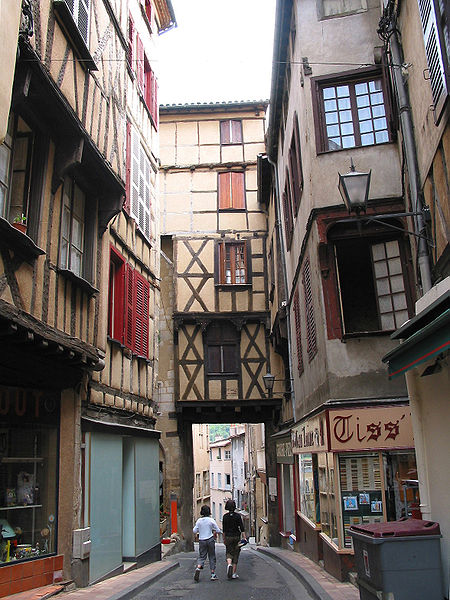Before leaving Bosnia, we retraced the steps of a trip we made nine years ago and one most tourists to the former Yugoslavia make: we drove from Sarajevo to Dubrovnik, the ancient city of Ragusa on the coast of Croatia. We were startled at how much it had changed in those nine years.
Halfway between Sarajevo and Dubrovnik is Mostar, whose already-famous bridge was spitefully demolished during the war. When we were here before, a massive bridge reconstruction project was going on. Today the bridge is fully rebuilt and the center of Mostar is full of tourists. It's a beautiful bridge (and the rocks below to it are perfect for climbing).
Near Mostar is Blagaj, one of the many springs that emerge from the limestone hills here. There is a very old mosque at the site of the spring and, nine years ago, that's all there was. Now we could barely get to the spring because of all the restaurants that have been built on the shores of the river and on platforms straddling the river. It's still an impressive sight and there is one spot, if you can find your way to it through the restaurant tables and along the path behind the kitchens, where you can get to the springs.
Also near Mostar is a beautiful old village, Pocitelj, which clings to a hillside and has ancient stone fortresses that look out over the entire valley that makes up Herzegovina. When we were here before, I thought the village had been abandoned for centuries until, crawling through ruins, we discovered the remains of a modern bathroom. Pocitelj was a majority Muslim community in the midst of a majority Catholic region and was nearly leveled during the war.
We were surprised to have a hard time finding parking on this visit to Pocitelj. There were tour buses there and lots of cars. At the entrance to the village we were greeted by vendors selling white paper cones full of gorgeous fruit--apricots, cherries. Nearly all of the houses have been rebuilt, it looks like, and people live here again.
Most wonderfully of all, the mosque has been beautifully reconstructed.
When we were there nine years ago, Dubrovnik was already rebounding as a tourist destination. Or so we thought. We couldn't believe the difference now: crowds and crowds of people--buskers in costume, Spanish and French and Italian and Japanese conversations, lines to get up on the walls of the city and no-nonsense signs insisting you go around the walls one directions only to improve pedestrian traffic flow. Everything in the city is also much more expensive than it was nine years ago, too.
Still, Dubrovnik is a beautiful and special place. Florence and Paris are crowded with tourists, too, and still worth visiting. Dubrovnik is the same.
Our favorite places, though, on this trip, were the little coastal towns near Dubrovnik. We stayed in a nearby town in a modest hotel with views to die for.
And we loved the little fishing town of Catvat. The town center was charming, the boats in the town harbor (yachts and fishing boats) were fun to look at, and the beaches were lots of fun.
While there were tourists everywhere we went, it was only in Dubrovnik and Mostar that the tourists appeared to be internationals. In Blagaj and Pocitelj, as in most of Bosnia, we heard only Bosnian being spoken. Tourism is returning, but slowly.


























































